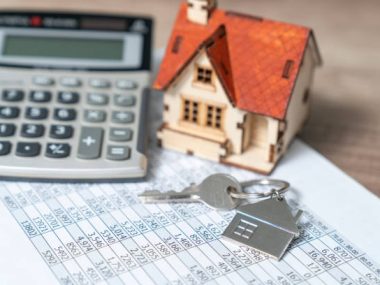Can you add renovation costs to conventional mortgage? Homeownership often comes with the excitement of creating a space that truly reflects your vision and needs.
However, the idea of purchasing a property that requires renovations can be both exhilarating and financially daunting.
This is where the concept of incorporating renovation costs into a conventional mortgage comes into play.
While conventional mortgages are traditionally used to finance the purchase of a home, many prospective buyers wonder if it’s possible to streamline the home-buying and renovation processes by bundling the costs together.
In this article, we’ll delve into the feasibility, benefits, and considerations of adding renovation expenses to a conventional mortgage.
Whether you’re eyeing a fixer-upper or aiming to make upgrades to your newly acquired property, understanding your financing options can pave the way for a smoother and more tailored homeownership journey.
Also Read:
How Is Rental Income Taxed When You Have a Mortgage?
How Many Days Before Closing Do You Get Mortgage Approval?
Can You Add Renovation Costs to Conventional Mortgage?
The prospect of incorporating renovation costs into a conventional mortgage raises intriguing possibilities for prospective homebuyers seeking to balance their vision for a personalized living space with financial feasibility.
Conventional mortgages, the staple of home financing, traditionally cover the purchase price of a property.
However, the desire to transform a house into a dream home often comes with additional expenses.
The question then emerges: Can renovation costs be seamlessly integrated into a conventional mortgage?
While conventional mortgages themselves do not typically encompass renovation expenses, alternative strategies, and loan programs have emerged to bridge this gap.
The Federal Housing Administration (FHA) offers the 203(k) loan, a well-known example, allowing buyers to combine home purchase and renovation costs into a single loan.
Yet, for those committed to a conventional mortgage, various options exist. Lenders might provide flexibility by allowing buyers to secure a slightly higher loan amount to accommodate renovation plans.
Alternatively, buyers can explore securing a separate home improvement loan alongside their conventional mortgage.
The decision to intertwine renovation costs with a conventional mortgage demands careful consideration.
Factors such as the extent of renovations, financial qualifications, and lender policies play pivotal roles.
Scrutinizing the potential long-term benefits against the immediate financial impact is crucial.
Ultimately, by navigating the landscape of conventional mortgages and renovation financing, individuals can uncover tailored solutions that transform their housing aspirations into reality.
Benefits and Limitations of Adding Renovation Costs
Incorporating renovation costs into a mortgage presents a range of benefits and limitations that individuals must weigh carefully.
On the positive side, bundling renovation expenses with a mortgage can streamline the financing process, potentially allowing for a lower interest rate compared to securing a separate renovation loan.
This consolidation can simplify monthly payments and paperwork, fostering convenience.
Moreover, combining expenses might enable buyers to afford properties that would otherwise be beyond their initial budget, facilitating the acquisition of homes in need of improvements.
This can be particularly advantageous in competitive real estate markets.
Additionally, when planned renovations enhance the property’s value, the investment could yield higher equity in the long run.
However, this approach has limitations. Buyers must adhere to strict budgeting to prevent overextending themselves financially.
Renovations can be unpredictable, and miscalculations might lead to insufficient funds to complete the project.
Furthermore, lenders impose constraints on the extent of renovations allowable, with strict appraisals and guidelines to ensure the property maintains its value.
Ultimately, the decision to add renovation costs to a mortgage hinges on individual circumstances.
A thorough evaluation of the potential financial benefits, the feasibility of adhering to budget constraints, and a clear understanding of lender terms is essential.
Balancing the prospect of a customized living space against the practicalities of long-term financial stability is pivotal in making an informed choice.
Steps to Incorporate Renovation Budget into a Mortgage
Incorporating a renovation budget into a mortgage requires a strategic approach encompassing several key steps.
- Project Assessment: Begin by outlining the scope of renovations needed and estimating associated costs. This detailed assessment guides decision-making throughout the process.
- Financial Evaluation: Analyze your financial situation to determine the maximum loan amount you can secure. Take into account the property’s purchase price, your down payment, and the projected renovation expenses.
- Lender Research: Explore lenders experienced in renovation financing. Discuss your plans with them, seeking information about their policies, loan programs, and eligibility criteria.
- Pre-Approval: Obtain pre-approval for a conventional mortgage, factoring in the anticipated renovation expenses. This provides a clearer picture of your budget and demonstrates your seriousness to sellers.
- Renovation Plans and Bids: Develop detailed renovation plans and obtain quotes from contractors. This information substantiates your budget during lender evaluations.
- Loan Application: Submit your formal mortgage application, ensuring it reflects the total loan amount required to cover both the property purchase and renovations.
- Appraisal and Approval: The lender assesses the property’s value based on the proposed renovations. If approved, the loan amount is determined.
- Contractor Verification: Your chosen contractor’s qualifications and estimates are reviewed by the lender to validate the feasibility of the project.
- Closing: Once approved, the mortgage closes, and funds are disbursed according to a predetermined schedule, allowing renovations to commence.
- Post-Renovation Inspection: Lenders may require a post-renovation inspection to confirm that the work has been completed satisfactorily before releasing the final funds.
By following these steps, you can systematically integrate your renovation budget into a conventional mortgage, facilitating a smoother transition from property purchase to turning your vision into reality.
Also Read:
How Does a Reverse Mortgage Work When You Die?
How Do Mortgage Interest Rates Work?
Conclusion
When it comes to homeownership, the prospect of blending renovation costs with a conventional mortgage offers both opportunities and considerations.
While conventional mortgages don’t inherently encompass renovation expenses, innovative solutions like the FHA 203(k) loan and lender flexibility can bridge this gap.
Balancing benefits like simplified financing and expanded property possibilities, against potential limitations like budget constraints and lender regulations, demands prudent evaluation.
By navigating these dynamics thoughtfully, individuals can unlock a pathway that harmonizes their housing aspirations with the practicalities of sustainable financial planning, ultimately bringing their dream home to life through a judicious fusion of conventional mortgage and renovation financing.






